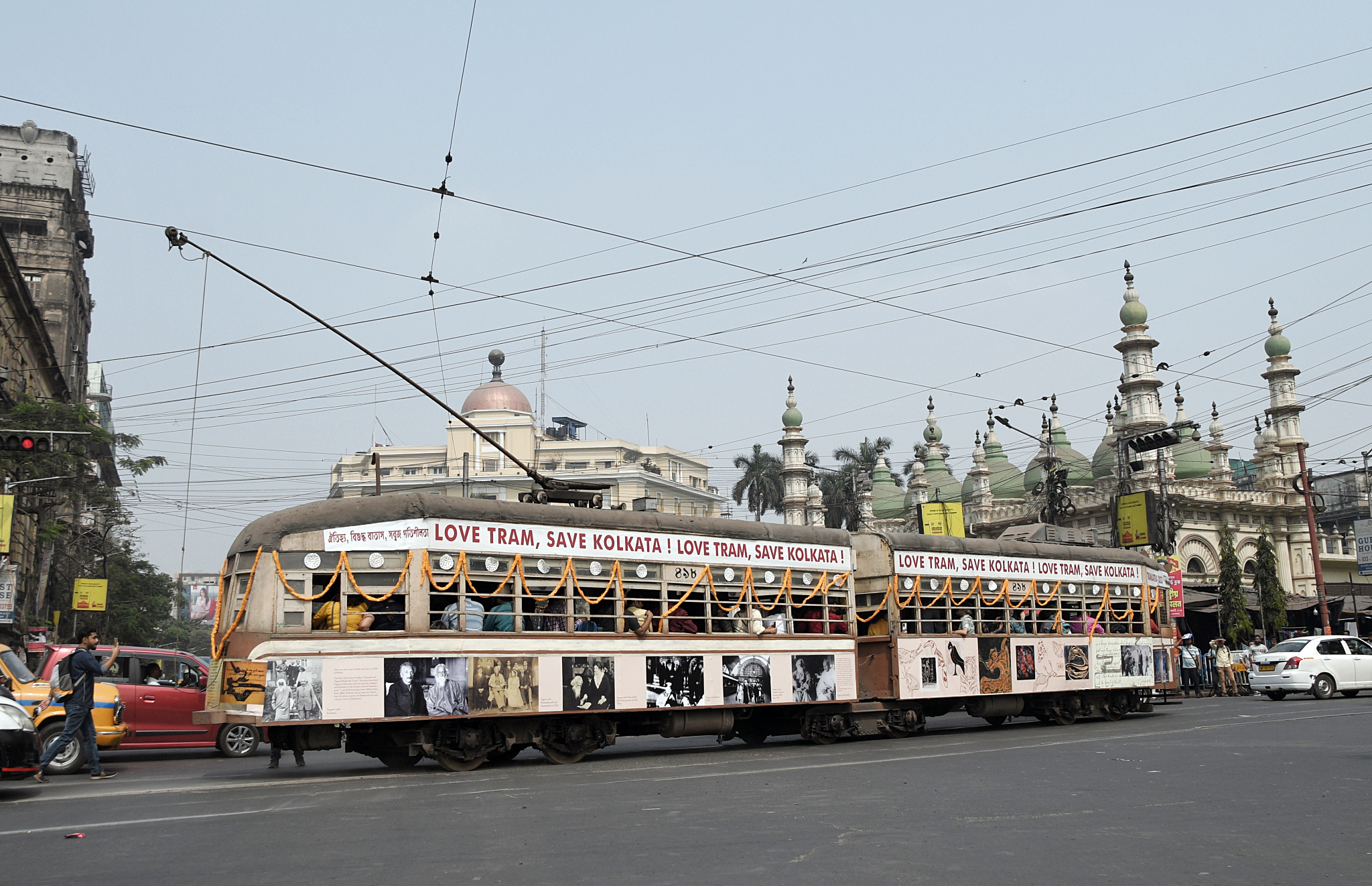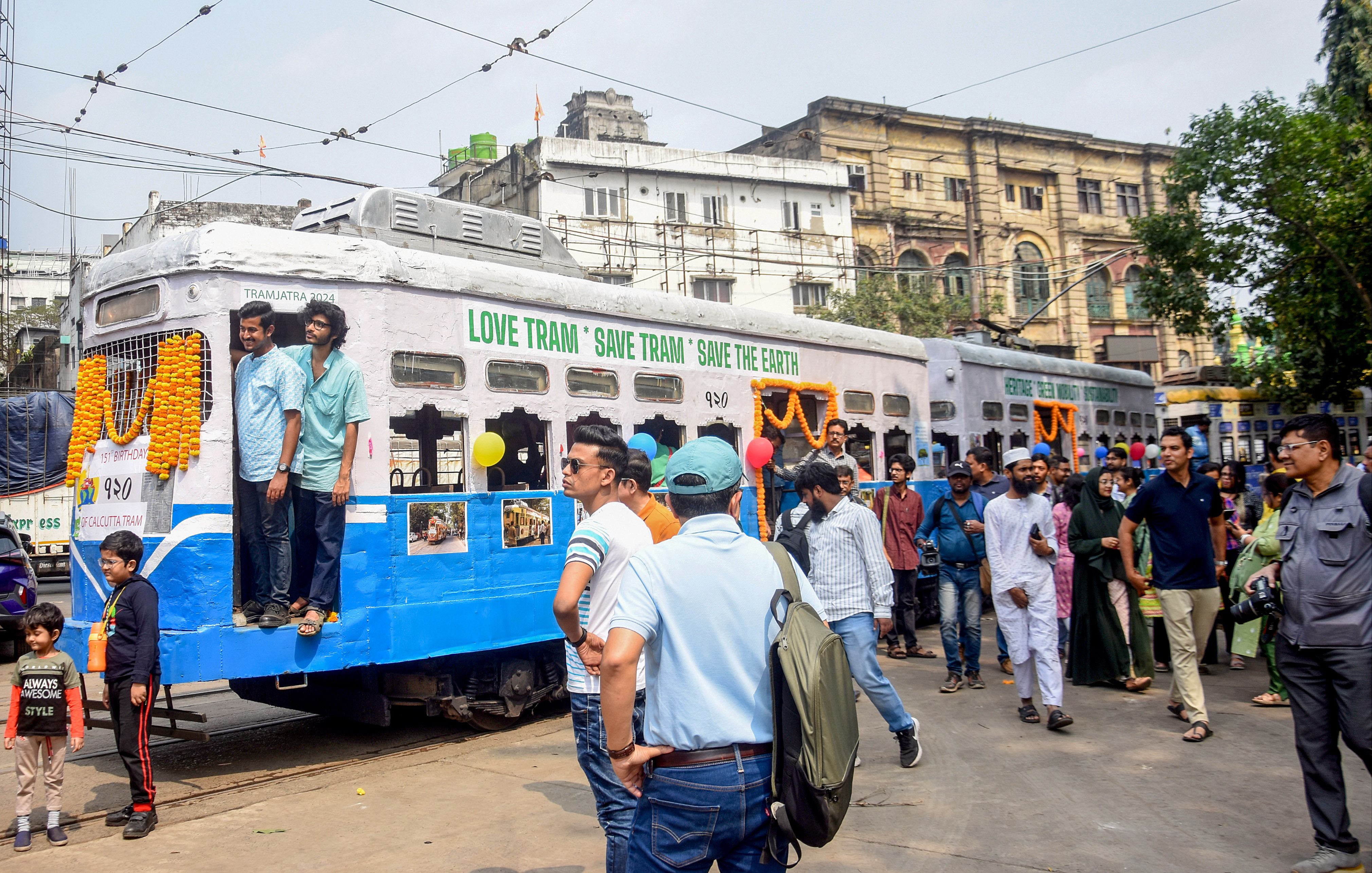The City of Joy is having its own ‘to be, or not to be, that is the question' moment.
Just as Hamlet starts his soliloquy contemplating death as well as suicide, the city of Kolkata is having thoughts about its own Ophelia, the tram car. The reason is simple, the Mamata Banerjee-government of Bengal has decided to shun the oldest and the most affordable mode of public transportation system of the city from its roads and only keep a light shade of it for some joyride along the Maidan, an expanse of greenery with the iconic Victoria Memorial looking across.
Trams have been a close-knit component of Indian cities for years. Introduced by the British, this mode of transport has ferried people for generations in Delhi, Bombay (now Mumbai), Madras (now Chennai) and even in smaller towns like Nashik or Bhavnagar.
To trace back Kolkata’s tryst with this urban mode of transportation, one needs to time travel to the past and go to February 24, 1873. It was on this day 151 years ago, that the first tram of Kolkata, albeit a horse-drawn carriage, made its debut between Sealdah and Armenian Ghat along the Hooghly River covering a distance of about 3.9 km.

After some initial hiccups, which led to a temporary suspension of service in its initial days, trams returned to the streets of Kolkata in November, 1880. This time it was a metre gauge service and the route was covering a bit more - from Sealdah to Bowbazar and then via Dalhousie Square to Armenian Ghat. The very next month, the Calcutta Tramways Company was formed and registered in London on December 20, 1880.
Since its inaugural run, trams spread to neighbouring Howrah across the Hooghly River and from horse-drawn carriages it became a fully electric powered tram car service by 1900. It had a brief tryst with the steam engine driven ones in between. The tramways were snaking along the roads of Kolkata with its total track length excluding depots and termini hitting 70.74 km by 1969. The wooden coaches were replaced with steel bodied cars in 1982 and polycarbonate trams were introduced in 2008. In its latest addition, many twin coach trams were reduced to single coach ones and in 2013, air-conditioned trams joined the fleet.
While all these happening, successive governments; be it the Congress or the Left Front or the Trinamool Congress, none thought about expanding the network. On the contrary, it kept dwindling. Though some new routes were added like trams began plying up to Joka in the southern suburbs or to Ultadanga in the east of Kolkata, yet many more routes in the main business district of the city and Howrah were discontinued. The death knell of the trams was gradually being sounded, thanks to the dismal maintenance of coaches little or no effort in modernising the fleet.

But, that did not deter the city’s dwellers from boarding the bold majesties. So much so that the trams of Kolkata made some grand appearances on celluloid and were made immortal as well as synonymous with the city.
It is difficult to forget the opening credits of Satyajit Ray’s classic cinematic experience of Mahanagar (1963). And how best to portray a bustling Mahanagar (the metropolis) like Kolkata than to train the lenses on the quintessential trams. Ray’s award-winning cinematographer Subrata Mitra, who had also filmed the globally acclaimed Apu trilogy for Ray, simply focuses on a moving tram and a jungle of criss-crossing electric wires with the cable gliding along for over two minutes as the opening credits roll on. Once credits for the film’s screenplay, music and direction finish rolling, Ray takes his audience from the cables to inside the tram car with the camera focusing on Anil Chatterjee, the protagonist. Throughout the credits, with the changing tempo of violin, cello and flute, along with the tram’s cable; Ray sets the perfect tone for the audience to enter into the myriad realities of a metropolis, the Mahanagar.
And its not just in Mahanagar that Ray had used the Kolkata trams to carry forward his cinematic storytelling. In Apur Sansar, the third of the Apu trilogy, Ray used the tram as a constant space for urban Kolkata, where the protagonist Apu, played by Soumitra Chatterjee, reads a letter from his editor and gradually his dreams turn to reality. The sequence is shot inside a tram car.

When celebrated director Ritwik Ghatak shot his 1958 film Bari Theke Paliye (The Runaway), the tram cars of Kolkata formed a background of the essential narrative of the film, the mechanical urbanisation of a metropolis.
Blending daily lives of an urban landscape with that of its people, director Mrinal Sen framed his Calcutta trilogy using the trams of Kolkata as a character, which defines each of his three films. Be it the Interview (1971) or Calcutta 71 (1972) or Padatik (1973), trams have always featured in Sen’s movies.
Moving from monochrome, Indian cinema has used the trams of Kolkata extensively. Mani Ratnam’s Yuva, Tigmanshu Dhulia’s Bullet Raja, Shoojit Sircar’s Piku, Dibakar Banerjee’s Detective Byomkesh Bakshy or Sujoy Ghosh’s Kahaani - all have trams and some even have used Kolkata tram depots as settings.
The gentle swaying while seated on a wooden bench or a bucket seat inside a tram as it traverses Kolkata streets sounding its bell and becoming a part of the urban cosmos, could now be a thing of the past.
Mamata Banerjee’s transport minister Snehasis Chakraborty blames the slow-moving trams of Kolkata for the traffic congestion of the city during peak hours and feels it is not a feasible mode.

"Only 6 percent of Kolkata’s surface area are roads and with the increase in vehicular traffic, we have noted that trams cannot ply on the same routes. It only leads to more congestion and bottlenecks. To ensure that commuters don’t remain stuck in traffic jams, we need to take some difficult decisions like withdrawal of tram services and retain it as a joyride between Maidan and Esplanade," Chakraborty has said.
What Chakraborty did not say was, global bodies like the International Association of Public Transport (UITP) feel that trams could be the foundation of the public transportation system and could always act as a supplement to the metro railway network. The electrically powered tram cars with an immense potential of reducing greenhouse gas emissions in the transport sector could be the best possible alternative for a city like Kolkata where vehicular pollution levels are alarmingly high. The minister was mum on the fact that the Trinamool-government never at any point in time think about restricting, or at least regulating private vehicle movement in a highly congested city like Kolkata and encourage public transport as the preferred mode for commuters.
The Calcutta Tram Users Association (CTUA) and other heritage conservationists are putting up a stiff resistance against the government’s move to phase out trams from Kolkata.
"The matter is being heard by the High Court where in December last year, the court has proposed a private-public-partnership model to revive and maintain trams in Kolkata. Trams have an average speed of around 25 km/hour, which is more or less the average speed of vehicles plying on congested roads of Kolkata, where presently there are no trams. The minister is wrong in saying that slow-moving trams are causing traffic woes to commuters. At a time when most cities across the globe are opting for greener, cleaner and affordable modes of urban transportation, this government is trying to murder its existing option," says Sagnik Gupta of the CTUA.
Some other members of the association and a section of Kolkatans are already casting aspersions on the Mamata-government’s move to phase out trams. They feel the government is deliberately using traffic woes and slow movement of trams to obfuscate the main issue of leasing out or selling off tram depots located at prime locations of the city and also selling off other assets, including high quality steel tracks.
The RG Kar rape and murder case has stirred the urban Bengali to such an extent that they have come out of their relative hibernation and are voicing their anger against the ruling dispensation on the streets. Mamata Banerjee-government’s decision to phase out the city’s trams could well add more fuel to the already burning embers of protest.
Read More



